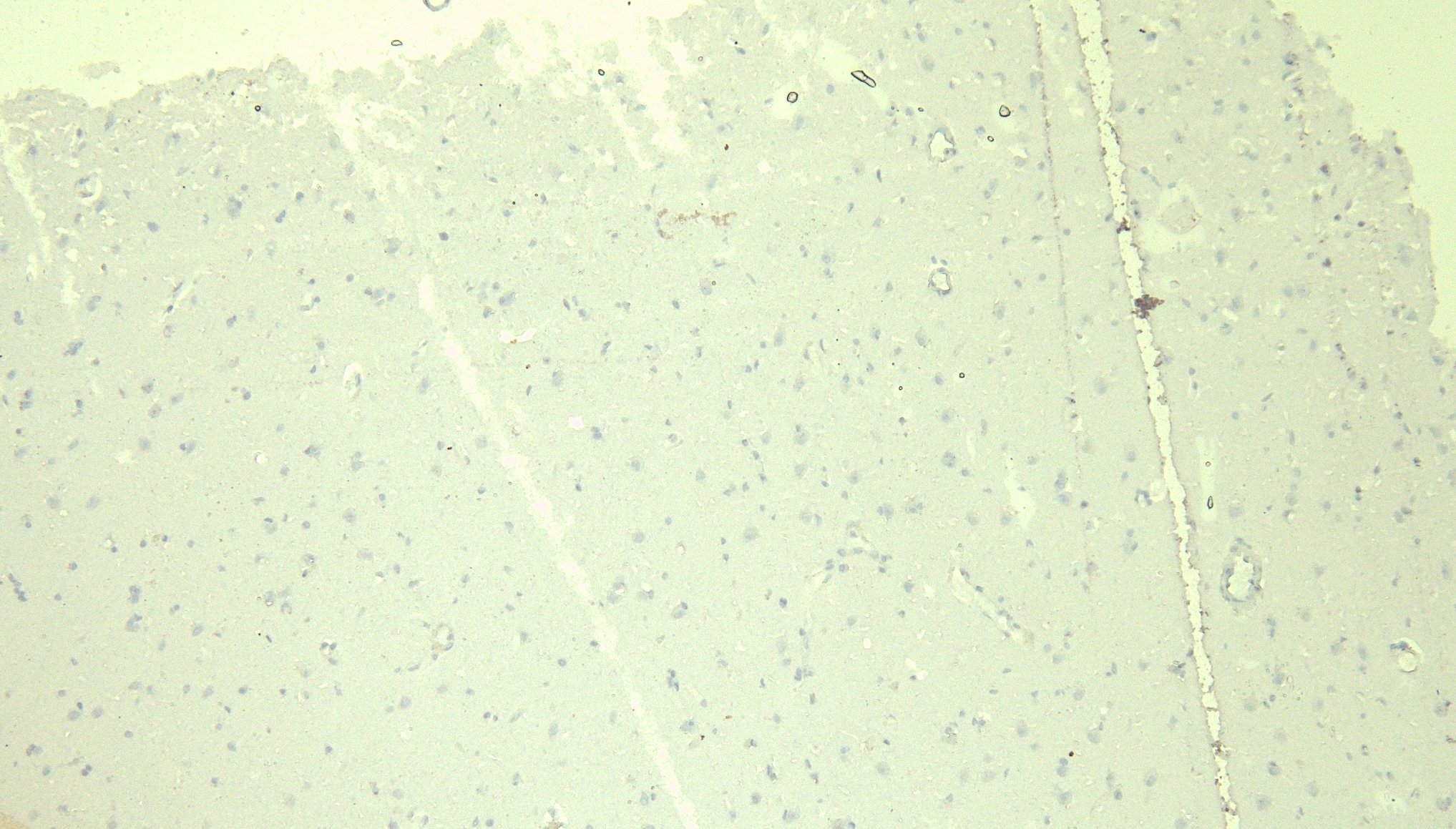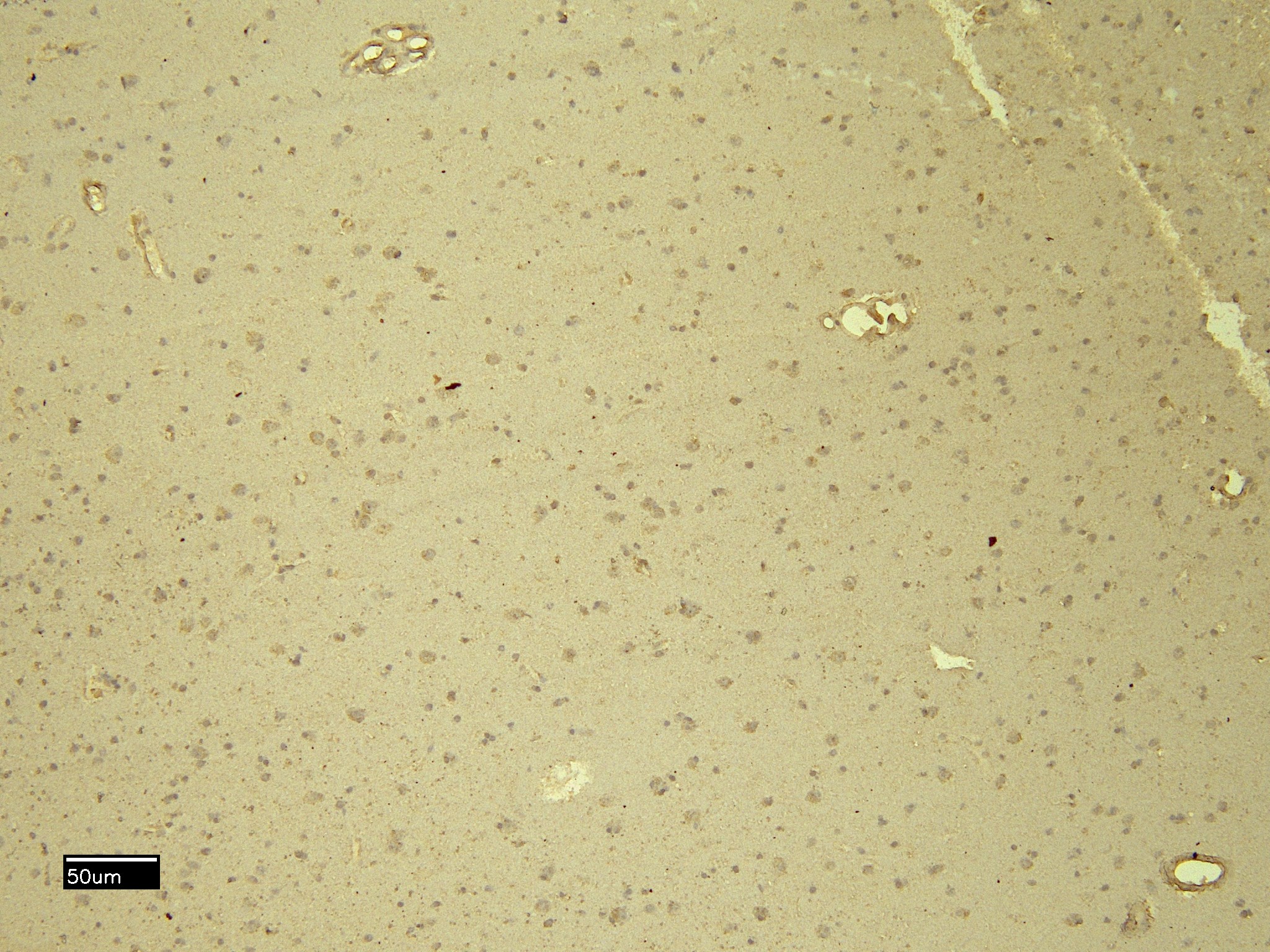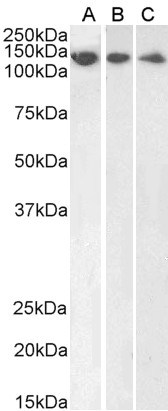Formulation Supplied at 0.5 mg/ml in Tris saline, 0.02% sodium azide, pH7.3 with 0.5% bovine serum albumin.
| |
Unit Size 100 µg | |
Storage Instructions Aliquot and store at -20°C. Minimize freezing and thawing. | |
Synonym / Alias Names XPE|damage-specific DNA binding protein 1 (127kD)|DDB p127 subunit|UV-DDB1|XPE-BF|XPCE|XAP1|DDBA|damage-specific DNA binding protein 1, 127kDa|DDB1 | |
Accession ID NP_001914.3 | |
Blocking Peptide EBP05033 | |
Immunogen Peptide with sequence C-DLIKVVEELTRIH, from the C Terminus of the protein sequence according to NP_001914.3. | |
Peptide Sequence C-DLIKVVEELTRIH | |
Purification Method Purified from goat serum by ammonium sulphate precipitation followed by antigen affinity chromatography using the immunizing peptide. | |
Shipping Instructions Refrigerated | |
Predicted Species Human, Mouse, Rat, Dog, Cow | |
Reactive Species Human, Mouse | |
Human Gene ID 1642 | |
Rat Gene ID 64470 | |
Product Grade  | |
IHC Results Paraffin embedded Human Brain (Cortex). Recommended concentration: 4-6µg/ml. | |
ELISA Detection Limit Antibody detection limit dilution 1:32000. | |
Western Blot Approx 140kDa band observed in lysates of cell line HeLa, HepG2 and Jurkat (calculated MW of 126.9kDa according to Human NP_001914.3). Recommended concentration: 1-2µg/ml.
Approx 140kDa band observed in lysates of cell line NIH3T3 and approx 150kDa band observed in lysates of cell line NSO (calculated MW of 126.8kDa according to Mouse NP_056550.1). Recommended concentration: 0.01-0.03µg/ml. Primary incubation was 1 hour. Preliminary testing was unsuccessful on Rat Kidney for this particular batch. | |
Application Type Pep-ELISA, WB, IHC |
Goat Anti-DDB1 Antibody
$423.00
| SKU | Unit Size | Price |
|---|---|---|
Select a unit size:
Selected References [{"pmid": 19966799, "intro": "This antibody (previous batch) has been successfully used in WB and IP on Human:", "title": "A promiscuous alpha-helical motif anchors viral hijackers and substrate receptors to the CUL4-DDB1 ubiquitin ligase machinery.", "author": "Li T, Robert EI, van Breugel PC, Strubin M, Zheng N.", "journal": "Nat Struct Mol Biol. 2010 Jan;17(1):105-11."}] |




